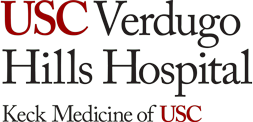Learn about the signs of high blood pressure and how to manage hypertension.
High blood pressure, also known as hypertension, is one of the most common chronic conditions in the United States. It’s estimated that nearly half of adults have high blood pressure, and only one in four have it under control, according to the Centers for Disease Control and Prevention.
Without proper management, high blood pressure can significantly increase a patient’s risk for serious conditions, including heart attack, stroke and kidney failure. That’s why experts like Jennifer Boozer, DO, a family medicine physician at Keck Medicine of USC, who provides services at USC Verdugo Hills Hospital, urges patients to know their numbers and see their primary care provider annually.
“Blood pressure is known as the ‘silent killer’ because it’s usually asymptomatic,” Dr. Boozer warns. “The good news is that with a stepwise approach, controlling your blood pressure is almost always within reach.”
What is high blood pressure?
High blood pressure is a condition in which the force of the blood flowing through the vessels is consistently too high. Over time, that elevated pressure can create tears in the blood vessel walls and lead to plaque buildup. Damage like this contributes to serious issues like heart disease and stroke.
“Different organizations vary in their cut-offs, but generally numbers that are consistently greater than 140/90 or 130/80 are considered hypertension,” explains Dr. Boozer, who is also a clinical assistant professor of family medicine at the Keck School of Medicine of USC.
The top number refers to systolic blood pressure, which is the pressure while the heart is pumping. The bottom number is diastolic blood pressure, which measures the pressure when the heart is at rest. If either of these numbers are out of range, you may have hypertension.
What are symptoms of high blood pressure?
The CDC estimates as many as one in five adults with high blood pressure don’t know they have it. That’s because there are usually no symptoms of high blood pressure. Patients can monitor it by having an annual physical during which the provider will take a blood pressure reading.
Dr. Boozer says physical signs of high blood pressure begin to appear when blood pressure is severely elevated. Patients may notice symptoms including headaches, chest pain, shortness of breath, abdominal pain, vision changes and decreased urine production.
“When elevated blood pressure is symptomatic, it is a medical emergency,” she says.
What causes high blood pressure?
Dr. Boozer says when she sees patients for high blood pressure, there are often multiple contributing factors that caused it.
Obesity is a common culprit for high blood pressure because excess weight strains the cardiovascular system. The heart has to work harder to pump blood throughout the body.
Lifestyle factors such as eating too much salt, excessive alcohol consumption and not getting enough exercise can contribute to elevated blood pressure. Other risk factors include sleep apnea and smoking cigarettes.
People with a family history of high blood pressure may face a greater risk of developing it themselves, even with a healthy lifestyle. “There can definitely be a genetic component, and in some patients, this is very strong,” Dr. Boozer says.
A common question is whether stress and anxiety cause hypertension. While anxiety can temporarily elevate blood pressure, it doesn’t directly cause long-term high blood pressure. However, if a patient is experiencing high levels of stress on a regular basis, this can cause damage akin to that of chronic high blood pressure.
How can patients reduce high blood pressure?
Natural remedies for lowering high blood pressure include engaging in regular cardiovascular exercise like running, cycling, swimming, dancing and climbing stairs. The American Heart Association recommends getting 150 minutes of moderate-intensity exercise or 75 minutes of vigorous exercise each week, and to incorporate strength training at least a couple times per week as well.
“Following a healthy diet, especially the DASH diet, is very helpful to control high blood pressure,” Dr. Boozer adds.
Short for “Dietary Approaches to Stop Hypertension,” this eating plan emphasizes lean means like chicken and fish, whole grains, low-fat dairy, and plenty of vegetables and fruits, while limiting sugars, salt and saturated fats.
“Avoiding alcohol is also helpful in lowering high blood pressure,” Dr. Boozer says. For implementing lifestyle changes, she stresses that health care professionals like dieticians and occupational therapists can significantly help patients in achieving their goals.
In addition, Dr. Boozer emphasizes that current blood pressure medications are very effective. “It is not unusual to need two or three or more medications. Fortunately, many come in combination pills, which makes sticking to the treatment plan easier,” she explains.
“Working closely with your primary care doctor to understand your condition and treatment plan is very important,” Dr. Boozer adds. “You can significantly improve your health and outcomes by getting your blood pressure to goal.”
Author: Erin Laviola

